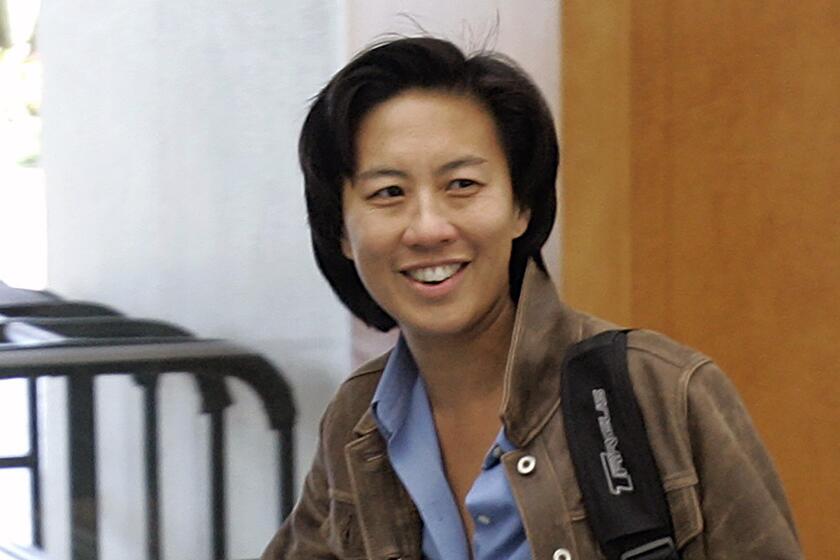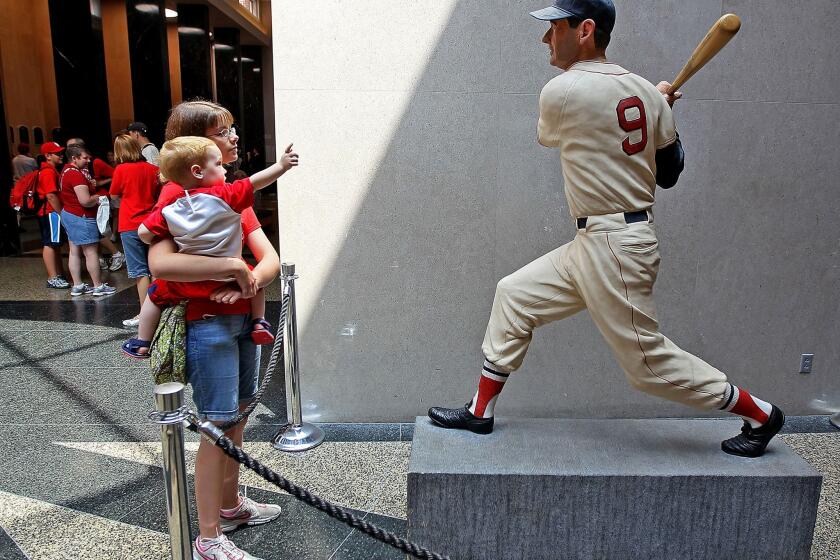Playing careers of managers nominated for MLB Hall of Fame could figure into induction

- Share via
The favorite saying of Cal Ripken Jr.’s dad was “there’s more than one way to skin a cat.” Ripken became a first-ballot Hall of Famer with 98.5% of the vote, so maybe there’s something to a proverb with a murky origin and puzzling imagery.
There’s also more than one way to the National Baseball Hall of Fame, although some routes have been murky and puzzling, not unlike the 33 turns it takes to reach Cooperstown, N.Y., from LaGuardia International. We’re talking committees, three of which were established a year ago and are just now being implemented.
Leading off will be the Contemporary Baseball Era Committee for Managers, Executives and Umpires, which will vote Dec. 3 on a ballot that includes managers Cito Gaston, Davey Johnson, Lou Piniella and Jim Leyland, umpires Joe West and Ed Montague, and executives Hank Peters and Bill White.
Any of them getting 75% of the votes from 16 Hall of Fame Board-appointed electorates will be inducted into the Hall of Fame Class of 2024.
Why did Kim Ng, the first female general manager in MLB history, walk away from her Marlins post? The owner told her he planned to hire a president of baseball operations.
Another new committee, this one to consider players, managers, executives and umpires from the Classic Baseball Era, defined as pre-1980, begins next year. And two years from now, a Contemporary Baseball Era ballot for players retired at least 15 years will take place, with Contemporary defined as a candidate whose primary accomplishments occurred after 1979.
Contemporary managers, executives and umpires get another shot three years from now, then it’s the classic era’s turn the next year, and so on, until Hall of Fame officials devise new pathways to Cooperstown, perhaps inspired by the 25 turns necessary to get to the tranquil village in central New York from the airport in Philadelphia.
The traditional Baseball Writers of America vote on qualified players who have been retired for at least five years remains a yearly occurrence.
Interesting for the committee evaluating the four managers on this year’s ballot is that their playing careers can be considered as well as their accomplishments from the top step of the dugout. Voters are instructed to consider the totality of each candidate’s contribution to the game, according to an executive at the National Baseball Hall of Fame.
None of the managers is a clear favorite. Piniella, Johnson and Leyland each won one World Series title and Gaston won two but is the only one of the four not to amass 1,000 victories. The other three far surpassed that number.
Piniella has the most victories, managing five teams to 1,835 and a .517 winning percentage over 23 seasons, winning a title with the Cincinnati Reds in 1990 and leading the Seattle Mariners to an American League record 116 wins in 2001. He was voted manager of the year three times.
Leyland is next with 1,769 victories but only a .506 winning percentage over 22 seasons piloting the small market Pittsburgh Pirates and Florida Marlins as well as the Detroit Tigers. He also was voted manager of the year three times and managed Team USA to the 2017 World Baseball Classic title.
Johnson was twice named manager of the year and has the highest winning percentage of the four candidates at .562, bolstered by the first five of his 17 seasons when he averaged 97.6 wins per season with the New York Mets and won the 1986 World Series. Johnson also managed the Dodgers in 1999 and 2000.
Manager Cito Gaston of the Toronto Blue Jays recalls being forced to bunk in segregated housing in Waycross, Ga., in 1964, his first spring training with the then-Milwaukee Braves.
Gaston has the fewest wins at 894 in 12 seasons with the Toronto Blue Jays but became the first Black manager to win a World Series when Toronto won back-to-back titles in 1992 and 1993.
Accomplishments as a player could benefit Piniella and Johnson, although neither posted anywhere near Hall of Fame numbers. Gaston hit .318 with 29 home runs and 93 RBIs in his second season but otherwise had an undistinguished 11-year career. Leyland never made it above double-A with the Tigers in seven seasons as a catcher.
Piniella, however, was American League Rookie of the Year in 1969 with the Kansas City Royals and batted .291 in 18 seasons, including 11 with the Yankees, for whom he batted .305 in 10 postseasons that included four World Series and two championships.
Johnson was the Baltimore Orioles’ second baseman for seven full seasons and his 43 homers and 99 RBIs in 1973 is recognized as one of the best seasons ever at the position. During his 13-year career, he was a four-time All-Star, won three Gold Gloves and enjoyed an outstanding postseason in helping Baltimore win the 1970 World Series.
The Contemporary candidate with the top credentials as a player is executive White. Long before breaking ground as the first Black president of a major sports league and first play-by-play broadcaster for a major league team, White was an eight-time All-Star and seven-time Gold Glove Award-winning first baseman with the St. Louis Cardinals and Philadelphia Phillies through the 1960s.
There was this time during the indignity years, when Bob Gibson was told where he could live in spring training because he couldn’t live with the white Cardinals.
White was the National League president from 1989-1994, presided over the addition of the Marlins and the Rockies, and helped consolidate the NL and AL under one administrative umbrella. Yet for all of his administrative accomplishments, White’s 51 years in baseball should best be remembered as groundbreaking: He endured searing discrimination and overt racism during his climb through the minor leagues.
Peters, the other executive on the ballot, spent 42 years in front offices, working for several teams including building the nucleus of the Athletics roster that won three consecutive World Series from 1972-1974. He became general manager of the Orioles in 1975 and built a team that won the AL pennant in 1979 and the World Series in 1983. In 1988, Peters took over as president of the Cleveland Indians, laying the foundation for their 1990s success.
Both umpire candidates boast resumes that appear deserving of joining the 10 arbiters already enshrined in Cooperstown.
West called the most MLB games — 5,460 — in history, working full-time from 1977-2021. West, who became perhaps the most recognizable umpire ever, worked five wild card games, eight division series, 10 league championship series, six World Series and three All-Star games.
Country Joe West has dabbled in singing and songwriting and even performed at the Grand Ole Opry.
Montague became a full-time National League crew member in 1976, one year before West, and worked 4,369 games before retiring after the 2009 season. He rose quickly, drawing his first postseason assignment in the 1979 NLCS, and went on to work seven league championship series, six World Series and four All-Star games. He was crew chief in the 1997, 2000, 2004 and 2007 World Series.
Eligible Contemporary candidates include managers and umpires with 10 or more major league seasons and retired for at least five years, although candidates age 65 or older are eligible six months after retirement. Executives must be retired for at least five years, although active executives age 70 or older are eligible.
The Contemporary Era Committee will meet Dec. 3 at baseball’s winter meetings in Nashville and vote results will be announced on MLB Network at 4:30 p.m. PST the same day.
More to Read
Go beyond the scoreboard
Get the latest on L.A.'s teams in the daily Sports Report newsletter.
You may occasionally receive promotional content from the Los Angeles Times.













